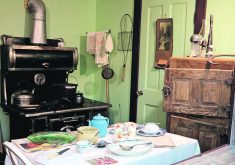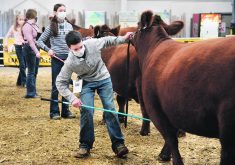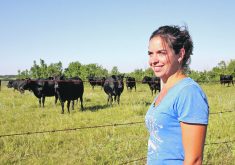Since its beginning in 1912, the Calgary Stampede has been about more than rodeo. Along with the cowboys are livestock, agricultural equipment and the latest technology.
The first colour television in Calgary was showcased at the Calgary Stampede, said Christine Leppard, manager of exhibits and experience with the Sam Centre, a year-round Calgary Stampede attraction that shares the stories of the Stampede.
“I think one of the fascinating things about the Stampede is that when Guy Weadick started it in 1912, the rodeo was really about entertainment. It was just on the cusp of transitioning to be the professional sport that we know today,” says Leppard.
Read Also
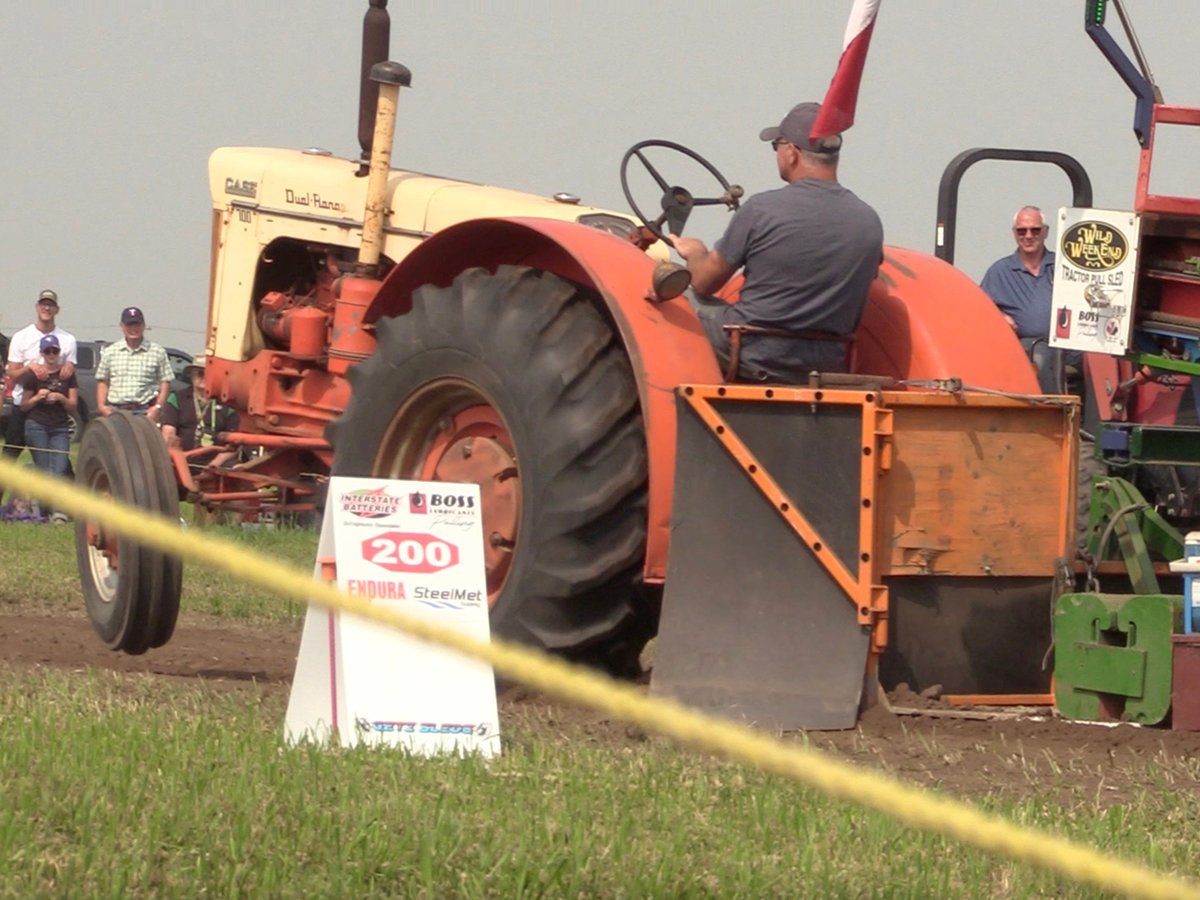
Vintage power on display at Saskatchewan tractor pull
At the Ag in Motion farm show held earlier this year near Langham, Sask., a vintage tractor pull event drew pretty significant crowds of show goers, who were mostly farmers.
“The Stampede throughout that whole period through to today is always on this course of providing great entertainment, but also learning and adapting to be the world class professional sport that it is today.”
Shortly after the event was started by Weadick, an American cowboy, it was one of the first rodeos to introduce chutes so athletes didn’t need to mount animals in the middle of the infield. It also created a defined field so spectators could see the action, which helped adapt the sport to become professional rodeo.
Three National Film Board films capture part of that transition from its early days and show how much the sport and the Calgary Stampede have changed over a 112-year history.
“Each and every movie is a bit of a reflection of a moment in time. It’s what the filmmakers are valuing. It’s a reflection of what western culture is at that moment.
“So, as we think about what Stampede culture means in a contemporary context, we can look back on those and learn about what it meant in the ‘60s and what we value and who we are today,” says Leppard.
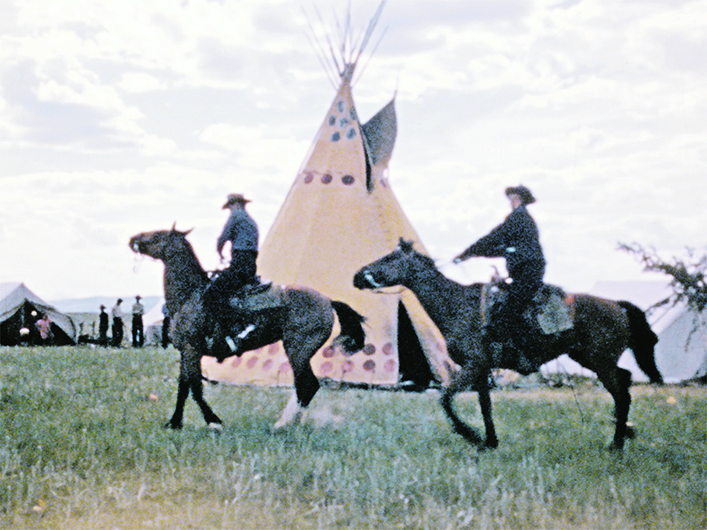
The 10-minute, 1946 film Bronco Busters looks and sounds more like a Hollywood western than a documentary. In the opening shots, cowboys mount their horses in the early daylight in front of teepees and campfires before galloping off to round up wild horses for the Stampede.
The horses are driven across rivers, through trees and finally into the corrals when the narrator says, “the wranglers know he has a corral full of dynamite.”
Chuckwagon, a nine-minute film, focuses on Dick Cosgrove and his son, Bob Cosgrove, from a longstanding chuckwagon family. Filmed in 1964, the film talks about the transition from using draft horses to pull wagons compared to today’s teams of thoroughbreds.
Viewers get a vantage from the driver’s seat, and see smashed wagons and outriders rolling under a fence to escape danger.
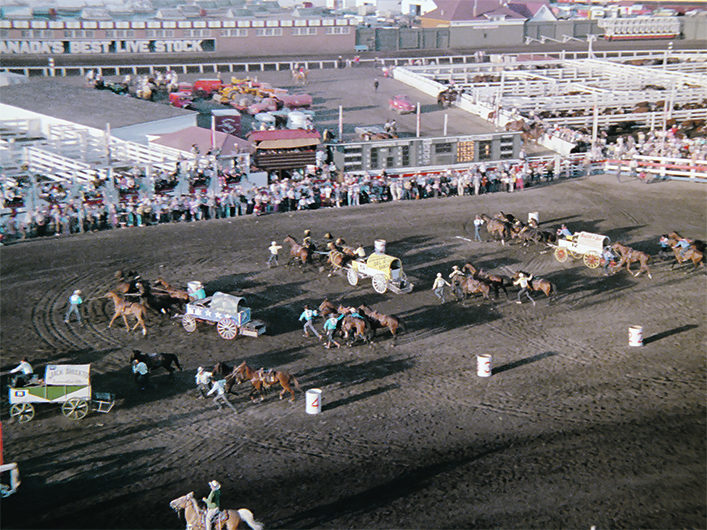
Even during the 1960s, the chuckwagon races were the premier event that garnered one third of the total prize money. At that time, outriders still threw a water barrel, tent poles and 50-pound stove into the back of the chuckwagon when the horn sounded.
“Between the ‘60s and today, we go through a really massive growth period in understanding animal care, understanding sport safety and positioning ourselves as leaders in the industry in animal welfare, in sport safety and certainly also safety for the participants as well for the human and animal participants,” said Leppard.
The 27-minute film Stampede was released in 1963 and captured the 1962 Stampede, its 50th. Thousands of people lined up at the Calgary airport to see Hollywood stars Roy Rogers and Dale Evans arrive. They later performed at 10 sold-out shows.
The film followed Calgary cowboy Kenny Parsons, a ranch hand, stunt man and rodeo cowboy who was at the Stampede hoping to win the $20,000 purse in the saddle bronc competition. But Parsons doesn’t win the money. Instead, the announcer says “now broke, Parsons will make his way to Montana where another rodeo opens the next day.”
Events no longer in the Calgary Stampede are featured, like the wild horse race in which 1,000-pound animals are wrestled in the infield while cowboys are carried off on stretchers as the action continues.
Leppard said there have been dozens of films and hundreds of reflections of the Calgary Stampede in feature length films or in television cameos.
“The worldwide attention of the Stampede is fostered and contributed to by these amazing moments.”
The Calgary Stampede continues to be an economic driver for the city and the region. Last year’s event drew the second largest attendance ever, with 1.34 million visitors. The economic impact is estimated to be $450 million per year, most of that during the 10 days of the Stampede at the beginning of July.
While many things have changed, others remain, as noted in the final words voiced by the announcer in Stampede: “Next year it will be much the same, the crowds, the excitement, the spectators will be back and so will the Stampede, the horses and wandering cowboys of the Canadian West.”
This column is the completion of a year-long collaboration between The Western Producer and the National Film Board of Canada celebrating the newspaper’s 100th anniversary.






